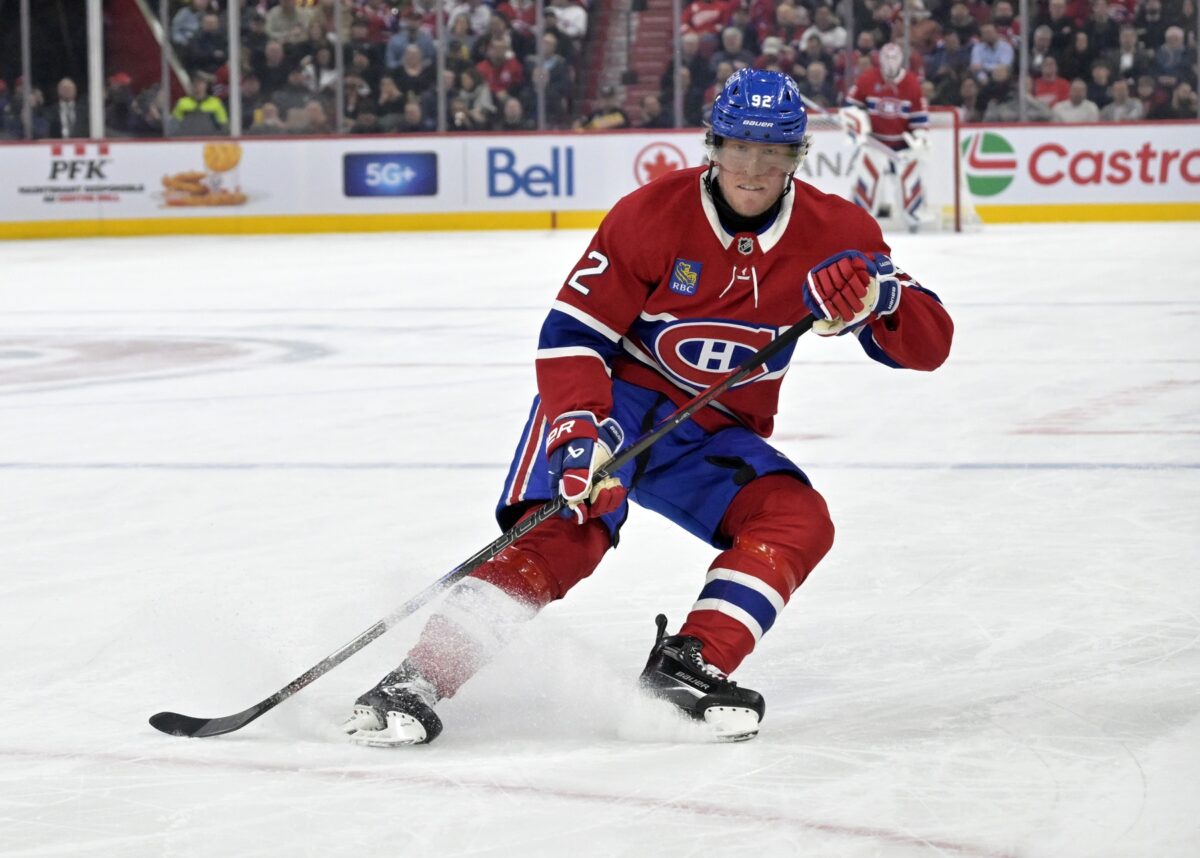The Montreal Canadiens’ encouraging start to the 2025–26 season has hit its first major roadblock. After already dealing with a string of injuries to key players, the team announced that Patrik Laine will miss three to four months with a core muscle injury. Laine may not have fully found his rhythm yet, but his shooting ability and offensive presence are unique weapons the Canadiens will now have to live without until well into the season.
The challenge ahead isn’t just about replacing Laine’s goals, it’s about managing the ripple effects across the lineup, protecting the team’s identity, and ensuring that no one is forced into a role they can’t handle. The Habs will have to rely on their organizational depth, their player development system, and possibly even some outside help to stay on track during this stretch.
The Injury
Laine’s absence reshapes the Canadiens’ lineup significantly. Over the past few games, Montreal had already recalled Owen Beck and Joshua Roy from the Laval Rocket to cover short-term injuries to Kirby Dach and Laine. Now, with Laine out for several months, the organization faces a longer-term adjustment.

Laine’s role was somewhat limited early in the season. He was skating on the second power-play unit and averaging fewer minutes per game than most regular forwards, but his shooting threat alone opened space for others. Losing him removes a valuable weapon from an already young offensive group.
With Laine sidelined, Joe Veleno will remain firmly in the lineup. The concern now shifts to the next potential injury: if another top-nine forward goes down, who’s next? Montreal’s depth will be stretched thin, and it’s becoming clear that the team’s margin for error is smaller than it seemed just a few weeks ago.
Depth and Possible Solutions
The Canadiens still have several paths forward. The most natural option is to rely on their internal depth. Players like Roy, Beck, and even Florian Xhekaj, if recalled for a spark, are the first candidates to fill open roster spots or take on larger roles. Roy has shown an ability to generate offense and make smart plays under pressure, while Beck brings structure, energy, and two-way reliability. Giving them more opportunities could pay long-term dividends for both the players and the organization.
This type of adversity can accelerate growth. The Canadiens’ rebuild has always emphasized internal development and patience, and this situation provides a chance to test that philosophy in real time. Relying on their American Hockey League (AHL) pipeline rather than rushing to make a move could strengthen the team’s cohesion and identity.
Related: Canadiens Are a Better Team Without Patrik Laine
That said, external help shouldn’t be ruled out. General manager Kent Hughes could explore the waivers for a cheap, short-term bottom-six forward or consider a minor trade for a veteran who can stabilize the lineup. The goal isn’t to replace Laine’s offensive ceiling, few can, but to prevent the lineup from being forced out of balance.
Depth Will Be Tested
Montreal’s depth has already been tested early this season, and it’s about to be pushed even further. With Kaiden Guhle expected to miss four to six weeks and Dach just coming back, Laine’s long-term absence compounds the pressure on the roster. The Canadiens have managed to stay competitive despite the adversity, but every injury chips away at their margin to compete night after night.
One decision that now stings more than ever is losing Sammy Blais on waivers to the Toronto Maple Leafs. His physicality and experience could have provided exactly the type of insurance the team needs right now. Instead, the Canadiens must look within and find creative ways to patch the holes.
But adversity often reveals character. This stretch will give players like Beck and Roy a chance to earn permanent spots, and it will challenge the coaching staff to find combinations that maintain competitiveness without overburdening the young core. The team’s early-season resilience suggests they’re capable of handling it.
Montreal’s success this season will depend not only on talent, but also on how effectively they manage obstacles. Every contender goes through injury waves; for the Canadiens, this is the first major test of how far their depth and development system has come.
Laine’s injury is a setback, but it doesn’t have to derail Montreal’s season. The Canadiens have built their roster with enough internal competition and flexibility to withstand tough stretches. If handled properly, this could even become a developmental opportunity that strengthens the organization long-term.
